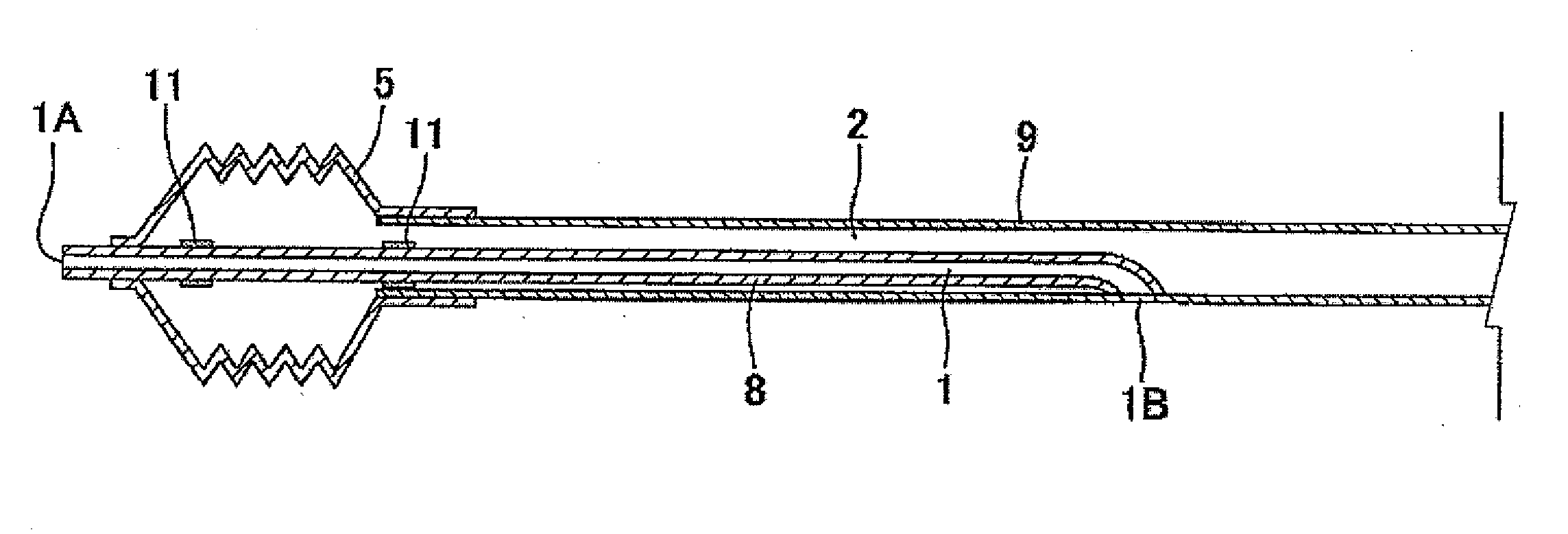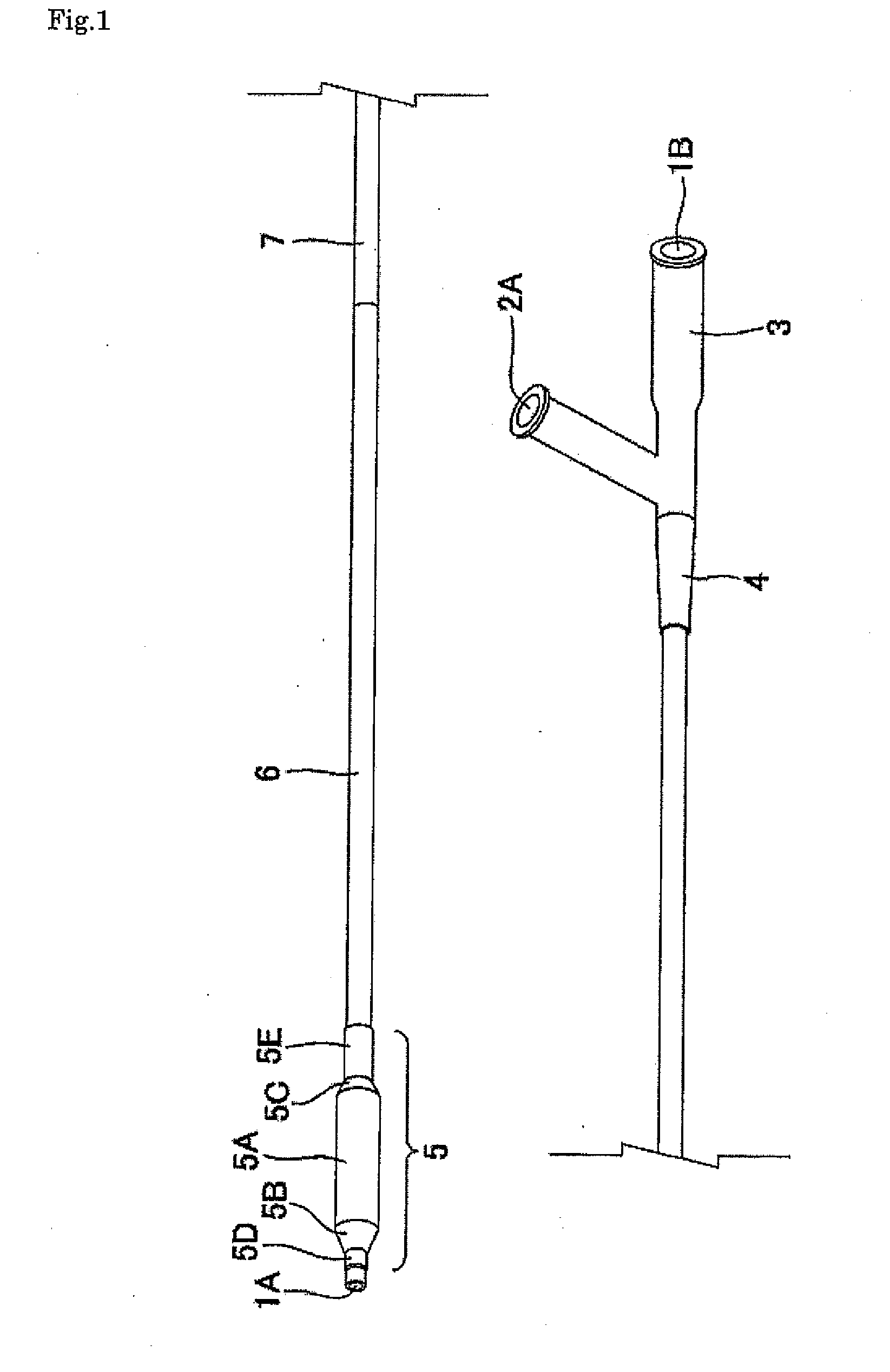Catheter
a catheter and catheter technology, applied in the field of catheters, can solve the problems of increasing the diameter and the flexibility of the connecting region, affecting the efficiency of insertion, and sometimes difficult to treat the lesion, and achieve the effect of favorable insertion efficiency
- Summary
- Abstract
- Description
- Claims
- Application Information
AI Technical Summary
Benefits of technology
Problems solved by technology
Method used
Image
Examples
example 1
[0123]A tubular parison (internal diameter: 0.43 mm, external diameter: 0.89 mm) was prepared by extrusion molding of a polyamide elastomer (PEBAX7033SA01, Elf Atochem); and a balloon having a straight-tube external diameter of 3.0 mm, a straight-tube length of 20 mm, a length of the tapered regions at the distal and proximal end sides of 5 mm, and a length of the connecting regions at the distal and proximal end sides of 5 mm was prepared by biaxially stretching blow molding of the parison.
[0124]A tube (internal diameter: 0.43 mm, external diameter: 0.56 mm) was prepared by extrusion molding of high-density polyethylene (HY540, Japan Polychem Corporation). The high-density polyethylene tube was cut into pieces of 46 mm and 254 mm in length. One end of the 46 mm-cut tube was expanded to an internal diameter of 0.58 mm, and one end of the 254 mm-cut tube was inserted into the expanded region and fused by heating, to give an internal shaft. The heat-fused region represents the project...
example 2
[0129]A tube having the crosssectional shape shown in FIG. 15 (diameter of inflation lumen 2a: 0.86 mm, thickness: 0.14 mm, diameter of each inflation lumen 2b: 0.06 mm) was prepared with a polyamide elastomer (PEBAX7233SA01 Elf Atochem) by extrusion molding. A balloon catheter was prepared in a similar manner to Example 1, except that the tube prepared was cut into pieces of 5 mm in length, and a tube prepared with a polyamide elastomer (PEBAX7233SA01, Elf Atochem) by extrusion molding (internal diameter 0.72 mm, external diameter 0.86 mm) was connected to both ends thereof by heat fusion to form a diameter-reducing protuberance.
example 3
[0130]A balloon catheter was prepared in a similar manner to Example 1, except that the core material 26B having the shape shown in FIG. 22 (diameter of large cylindrical region 27C: 0.41 mm, diameter of small cylindrical region 27d: 0.16 mm) was used in preparing the diameter-reducing protuberance.
PUM
 Login to View More
Login to View More Abstract
Description
Claims
Application Information
 Login to View More
Login to View More - R&D
- Intellectual Property
- Life Sciences
- Materials
- Tech Scout
- Unparalleled Data Quality
- Higher Quality Content
- 60% Fewer Hallucinations
Browse by: Latest US Patents, China's latest patents, Technical Efficacy Thesaurus, Application Domain, Technology Topic, Popular Technical Reports.
© 2025 PatSnap. All rights reserved.Legal|Privacy policy|Modern Slavery Act Transparency Statement|Sitemap|About US| Contact US: help@patsnap.com



